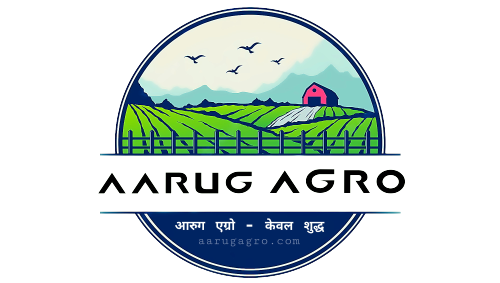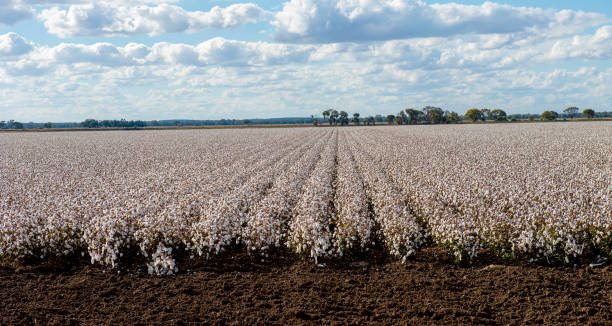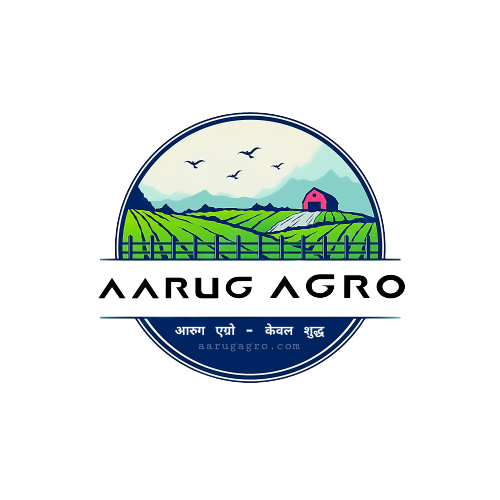Cotton Farming: Textiles and clothes are made from cotton, a Kharif crop. The Kharif crop matures in 6-8 months. Depending on the climate conditions, crops are harvested and sown at different times in different regions. The crop is sown in April-May and harvested in December-January to avoid damage from winter frosts. Soil with a high temperature is required for planting. Cotton has been around since 5000 BC. Mexico had cotton fibers and boll fragments around 5000 BC. There have been 5000 years of use of cotton in India and Egypt.
Indian Cotton Types
Cotton is available in three types. Fibers are classified according to their strength, length, and structure.
Long-Staple Cotton
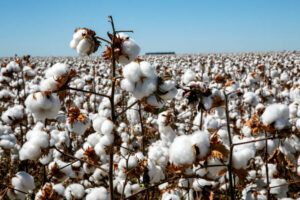
Fibers of this type range from 24 to 27 mm in length, as its name implies. There is a lot of shine and fineness to this fiber. Superior and fine quality cloth can be made with this fiber. Among the types of cotton that are most commonly used in India and have the lowest Kapas prices is long-staple cotton. Over half of the total cotton production in India is long-staple cotton. There are several states that produce long-staple cotton, including Punjab, Maharashtra, Madhya Pradesh, Tamilnadu, Haryana, and AP.
- Medium Staple Cotton
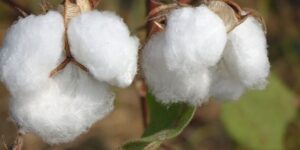
Fiber lengths in medium staple cotton range from 20 mm to 24 mm. Kapas produces almost 44% medium staples. Maharashtra, Punjab, Karnataka, Madhya Pradesh, Tamilnadu, Uttar Pradesh, and Karnataka are the major states. It provides good quality clothes in India, being the second most widely used fiber. The price is reasonable.
- Short Staple Cotton
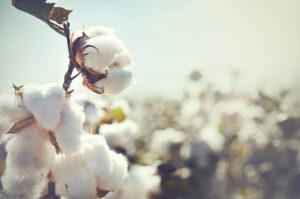
Cotton with a short staple is inferior to cotton with a long staple. Staples of short-staple cotton are less than 20 mm long. Low-priced inferior cloth was manufactured by it. About 6% of the total production of cotton is made up of short staple cotton. As far as short-staple cotton production goes, AP, UP, Haryana, Punjab, and Haryana lead the way.
Read More:The Hydroponics Industry in India: How to Get Started?
Cotton Production Process in India
Here, we are showing cotton processing steps.
- Planting

cotton-planting
Creating furrows in the soil is the first step in cotton production. Early February and late June are the best times to plant cotton. Furrows and direct water irrigation help warm the soil faster. The soil is ready for planting at 65 degrees. Soil is planted with seeds by farmers.
Cotton farming requires this process, which is both important and difficult. Nevertheless, it becomes easier if the proper precautions are taken and the farm machines are advanced. Farmers should use heavy farm machinery for planting and soil preparation, such as harrows, cultivators, land levelers, etc. A good soil is prepared for good production by improving its quality.
- Growing
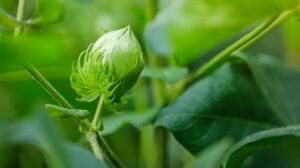
Plants grow in the next step. A seed sprouts up from the soil within 1-2 weeks of planting. Two to five feet tall, the plant blooms after 8-10 weeks. With three days to go, the white flower will turn pinkish-red from its creamy white color. A developing boll remains behind after the flower withers and falls off. The cotton boll develops in about 10 weeks.
- Boll Opening
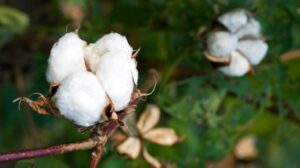
Boll Opening The third step involves opening the cotton bolls, allowing the white dry bolls to evaporate, and fluffing the fiber. Cotton crops can then be harvested after this process. It takes 50-70 days for cotton bolls to open after blooming.
- Picking
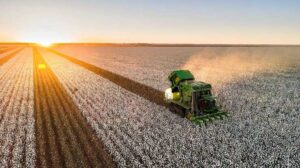
picker A farm machine is needed for this step in order to remove the fiber from the plant. Pickers are machines used to harvest cotton, the process known as picking. At a time, the machine can harvest up to six or eight rows. Late October or early July is the harvesting season for cotton.
- Modules
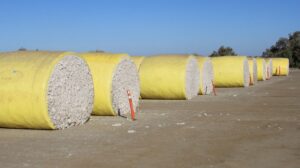
Modules To make a module, the picker’s cotton is dumped on the ground and compressed with a hydraulic module builder. Field storage is provided for the modules.
- Ginning
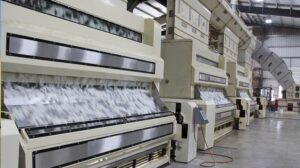
Ginning This process involves transporting the modules to the cotton gain, where the cotton is dried, cleaned, and the fiber is mechanically separated. Gins are machines with circular saws that separate raw fibers using ribs. Seeds cannot pass through the ribs. A machine carefully separates the fiber from the cottonseed.
- Cottonseed

Cottonseed Cotton oil, cotton meal, hulls, and other important products can be made from cottonseed after it has been separated.
- Cotton Fiber

CottonFiber
Raw fiber is pressed into bales through this process, called lint. There are many uses for cotton fiber, including clothes, textiles, and many others. Eight steel straps secure the bales, they’re tested by experts, they’re wrapped with protection, and they’re shipped to yards, mills, and other countries.
Read More:Indian Terrace Farming: Cultivation, Types, and Benefits
Benefits of Cotton Production
-
The benefits of cotton include its use in clothing, bedsheets, curtains, and jackets.
-
Food and cosmetics can be made from cotton seed oil.
-
Oil, plastics, coffee filters, and rubber are profitable.
Which is the Largest Cotton Producing State in India?
Gujarat
Gujarat is India’s leading cotton producer. Cotton is produced on 26.59 lakh hectares in India and covers 95 lakh bales. Cotton production in this state in 2019-20 is profitable due to the annual rainfall and black soil. Among the most popular cotton production regions are Vadodara, Mehsana, Bharuch, Surendranagar, and Ahmedabad. As a result of the huge amount of cotton produced in Gujarat, the state is a center for the textile industry.
Maharashtra
Maharashtra produced 82 lakh bales of cotton in India, making it the country’s largest cotton producer. Maharashtra produces cotton on 42.54 lakh hectares. Akola, Wardha, and Amravati are the largest cotton-producing regions in Maharashtra.
Telangana
A total of 53 lakh bales of cotton are produced in Telangana, which covers 18.27 lakh hectares in India. In the state, cotton is mostly produced in Guntur, Anantapur, Prakasam, and Kurnool.
Rajasthan
Approximately 6.29 lakh hectares of Rajasthan are covered by cotton fields that produce 25 lakh bales of cotton per year. Among the regions are Bhilwara, Ajmer, Chittorgarh, Jhalawar, Pali and Hanumangarh.
Haryana
As the fifth-largest producer of cotton in the world, Haryana produces 22 lakh bales annually. Haryana has a cotton plantation covering 7.08 lakh hectares. There are major regions in Fatehabad, Sirsa, Hisar, Bhiwani, Jhajjar, Charkhi Dadri, Faridabad, Mewat, Palwal, Panipat, Karnal, Gurugram, Rohtak, Jind, and Kaithal.
Madhya Pradesh
The state of Madhya Pradesh produces 20 lakh bales annually. Cotton is grown on 5.79 lakh hectares in MP. There are four cotton-producing regions in India: Bhopal, Dewas, Ratlam, and Nimar.
Karnataka
India’s seventh largest cotton-producing state, Karnataka, produces 18 lakh bales of cotton per year. Karnataka covers 6.88 lakh hectares with cotton. Due to ideal conditions for cotton production, Kapas grew on the North Karnataka Plateau. Belgaum, Gulbarga, Dharwad, and Gulbarga are the major reasons.
Punjab
Approximately 2.68 lakh hectares of land are devoted to agriculture in Punjab, which produces 13 lakh bales each year in India. In addition to Ludhiyana and Moga, there are also Bhatinda, Faridkot, Sangrur, and Mansa.
TamilNadu
In Tamilnadu, cotton is grown on 1.31 lakh hectares and 6 lakh bales of cotton are produced every year. TamilNadu has cotton-producing districts such as Vellalore, Ramanathapuram, Coimbatore, Salem, Madurai, and Tiruchirapalli.
Odisha
The state of Orissa produces 4 lakh bales of cotton per year for India and 1.58 lakh hectares of cotton land. Orissa’s main cotton-producing state is Subarnapur.
| States | Production (2019-20) | Area (Hectares) | Yield (Kg/Hectares) |
| Gujarat | 95 Lakh | 26.59 lakh | 556.22 |
| Maharashtra | 82 Lakh | 42.54 lakh | 307.71 |
| Telangana | 53 Lakh | 18.27 lakh | 437.33 |
| Rajasthan | 25 Lakh | 6.29 lakh | 675.68 |
| Haryana | 22 Lakh | 7.08 lakh | 552.26 |
| Madhya Pradesh | 20 Lakh | 5.79 lakh | 664.50 |
| Karnataka | 18 Lakh | 6.88 lakh | 370.64 |
| Punjab | 13 Lakh | 2.68 lakh | 729.48 |
| Tamilnadu | 6 Lakh | 1.31 lakh | 778.63 |
| Odisha | 4 Lakh | 1.58 lakh |
484.18 |
Which Are The Largest Countries of Cotton Production in the World?
In terms of cotton production, India is the world’s top agricultural producer. In this chart, we display the largest Kapas-producing countries in the world ranked by production (1000 480 lb. bales). In terms of cotton production, India ranks first in the world with 28500 (1000 480 lb. Bales). The cotton production area in India is 125.84 lakh hectares.
Following are the leading cotton producers in the world.
- India – 28,500
- China – 26,500
- United States – 19,500
- Brazil – 12,000
- Pakistan – 6,300
- Turkey – 3,300
- Uzbekistan – 3,250
- Australia – 1,700
- Greece – 1,640
- Benin – 1450
For more latest updates related to agriculture stay tuned with Aarug Agro.
